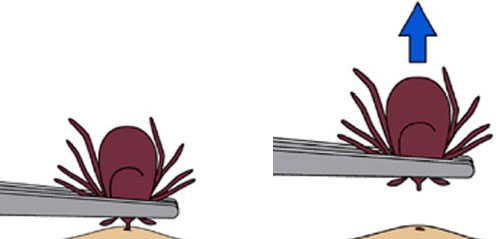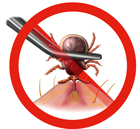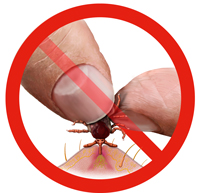This video shows how a tick digs into the skin with its saw-like mouthparts.
Many different tick removal devices are on the market. The aim of all procedures is the gentle removal of the undamaged tick as soon as possible.
By "gentle" is meant that the tick is not squeezed, damaged or otherwise irritated by the removal. That's why we do not recommend the use of rigid materials (forceps, tweezers, etc.) or the application of oil, glue, electricity, as this might lead to the vomiting of the tick and thus to transmission of pathogens.
Concerning the question 'twisting or pulling' different notes can be found in the literature, with a preference for the rotating methods:
- Zenner (2006) shows, that by twisting 20% and by pulling 70% (!) of the mouth tools remain in the host,
- Robisch (2010) prefers the rotating procedure after testing different methods of removal,
- Duscher, Peschke und Tichy (2012) point out the advantages of twisting,
- Meinhold (2016) gives an overview of the different removal methods.
The Tickgripper fulfills the mentioned criteria.
For there are very different and sometimes contradictory recommendations on tick removal, it's worth taking a look at the Centers for Disease Control and Prevention (CDC), which illustrates tick removal with this image:

As you can see, the tweezer is pressing on the head of the body near the head. Thereby the salivary glands (here TBE virus can be located) and parts of the intestine (here Borrelia can be located) are squeezed. In case of very small ticks, which is mostly the case in humans, squeezing of the ticks body can not be prevented. To make matters worse, some ticks are digging so deep into the host, that by removing them with a tweezer, high pressure is applied to the tick with the described consequences.
This procedure proposed by the CDC is, in our opinion, an improper, risky method of removing ticks.


Be on the safe side and use the Tickgripper.






